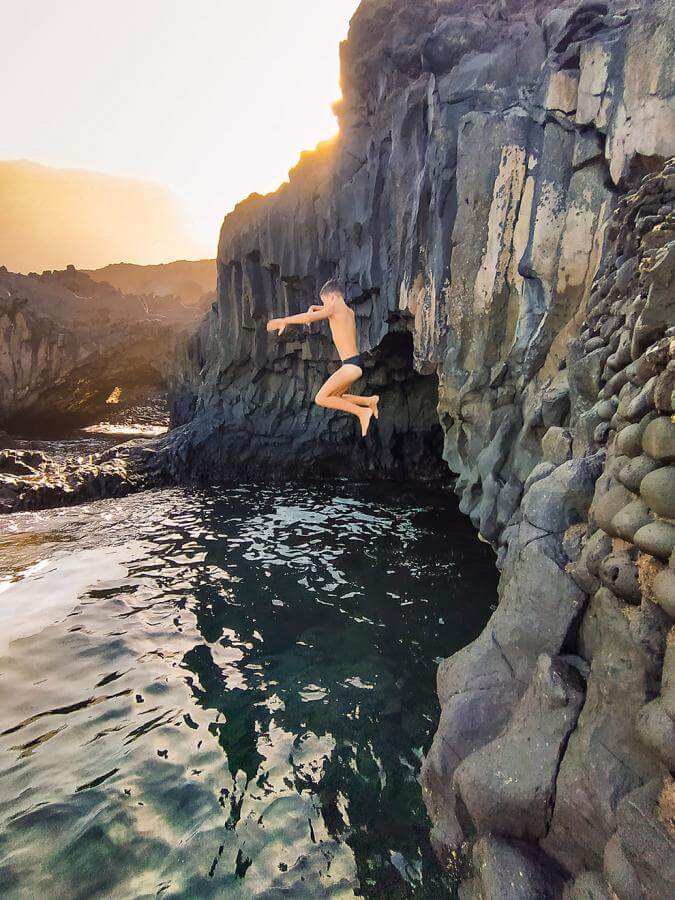Volcanic eruptions in 2011 and 2012 rejuvenated the waters around El Hierro















El Hierro, the youngest of the Canary Islands, came into being 1.2 million years ago thanks to several volcanic eruptions whose magma created an island which soared to 1,501 metres above sea level at its highest point. Volcanic eruptions are part of El Hierro’s history, but they are also part of its present. Between October 2011 and March 2012 El Hierro experienced several eruptions from an underwater volcano. Though the seismic shifts that resulted were barely perceptible to locals, they had an impact on the landscape which swelled by six centimetres in some places. This eruption was a rare event (the first of its kind in 500 years) and resulted in a rich new biodiversity in the waters around El Hierro which over the last few years many divers have enjoyed exploring.
Volcano Tagoro is 400 metres deep
The volcanic discharges between 2011 and 2012 lasted for 134 days and became, after the eruption in Timanfaya (Lanzarote) in 1730, the second longest eruption in Canary Islands history. The new volcano which was created, five minutes from Restinga in the Mar de las Calmas, is 400 metres deep.
Rejuvenated seabed
The volcanic eruptions between 2011 and 2012 rejuvenated the seabed. Nowadays the area is full of underwater life, and this offers an exhilarating experience for divers. Between April, 27 and May 4, 2015 the Canary Islands Oceanographic Centre which is connected to the Spanish Institute of Oceanography organised an expedition to gather samples of the rich biodiversity around the volcano.
Fish, bivalve molluscs and sessile organisms
The lava that was expelled by the volcano offers a home to numerous organisms which attract fish, crustaceans and cephalopods. Bivalve and polychaete molluscs feed off the water that is loaded with nutrition thanks to the organic properties of the volcano. Sessile organisms such as gorgonians, corals and sponges are also present. Among the species of fish, there are yellow fulas, conger eels, moray eels, lizards, cabrillas, pejeperros and amberjacks.
A divers’ destination
Even before the emergence of the new volcano in the 2010s, El Hierro was one of the most popular destinations in the world for diving enthusiasts of all abilities. After the creation of the underwater mountain the island is more popular still. El Hierro offers first class facilities for all divers. There are a wide range of dive sites. In the La Restinga area you can descend to a depth of 300 metres several miles from the coast and enjoy amazing horizontal views of 30 metres. There is a whole world of underwater life to discover around the island.



Great variety of flora and fauna
The temperature in El Hierro normally ranges between 18 and 25 degrees. This warm weather attracts many Mediterranean and tropical varieties of flora and fauna. The dense vegetation that covers the rocky ocean bottoms around the island is an ideal refuge for a great variety of amazing creatures including migratory species. The La Restinga Marine Reserve is an internationally recognised sanctuary that provides a home to turtles, tuna, rays, groupers, pooches, barracudas and even some peaceful sharks. It is a great place to visit and discover more about the wealthy natural world around El Hierro.
Natural laboratory
The opulence of the natural world around El Hierro has led it to be nicknamed a natural laboratory by the Spanish Institute of Oceanography which has carried out many scientific studies in the area. The island is particularly interesting for scientists that want to learn more about the environmental changes that take place on marine ecosystems after a volcanic eruption.


